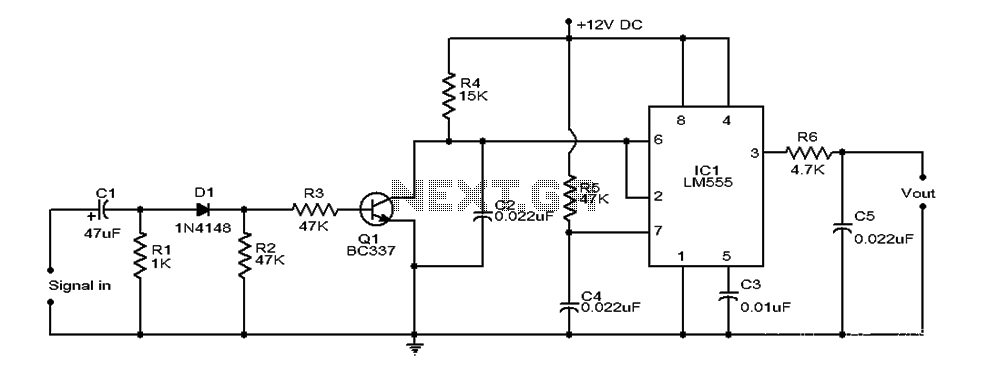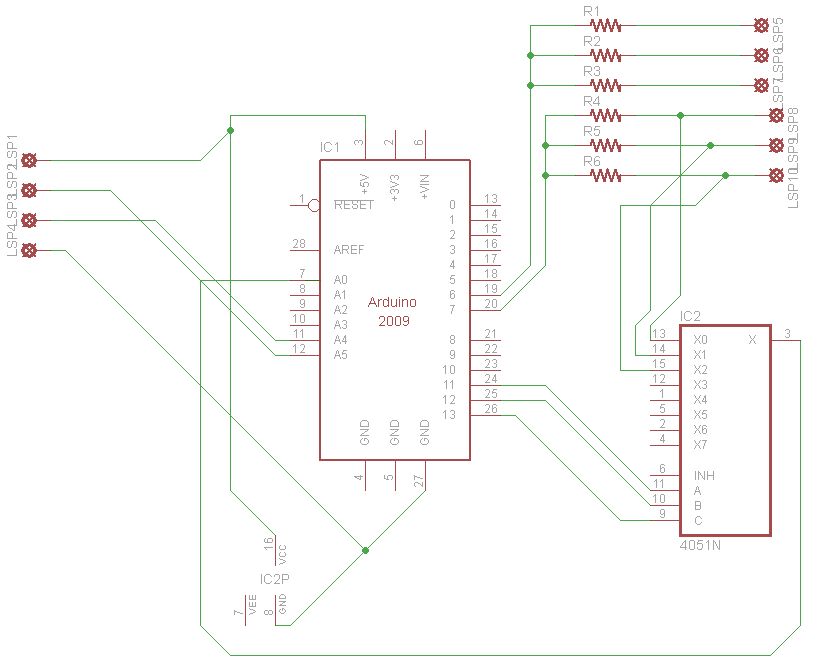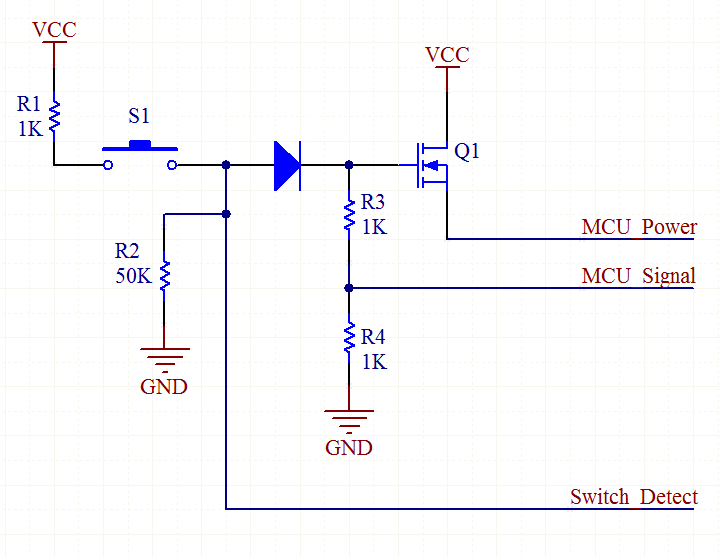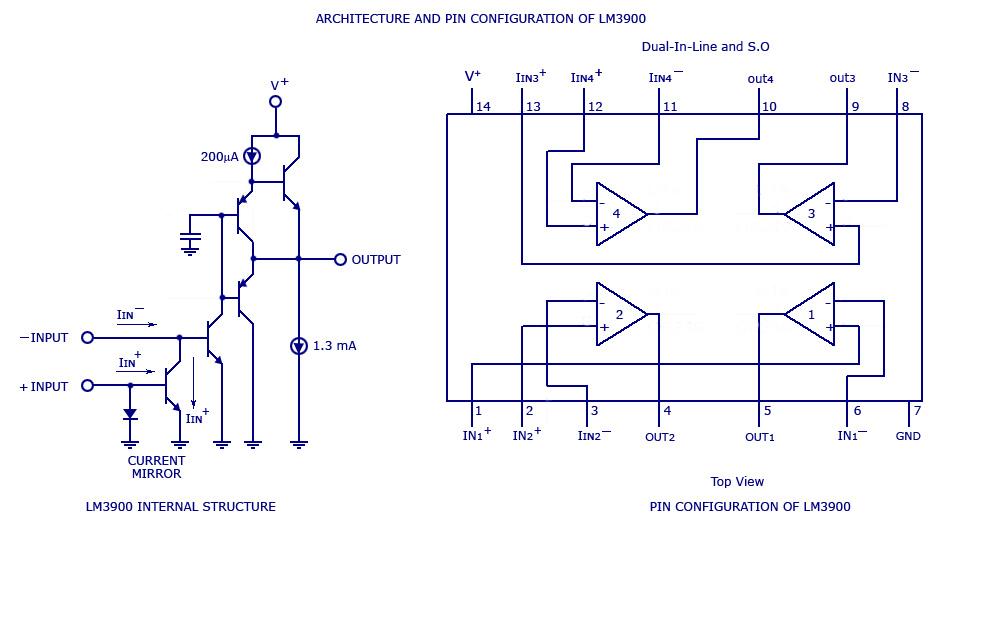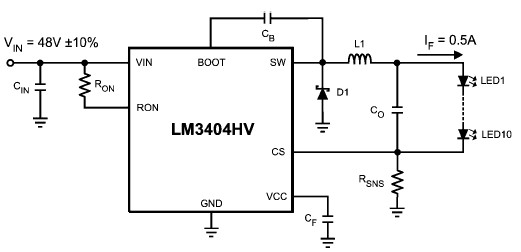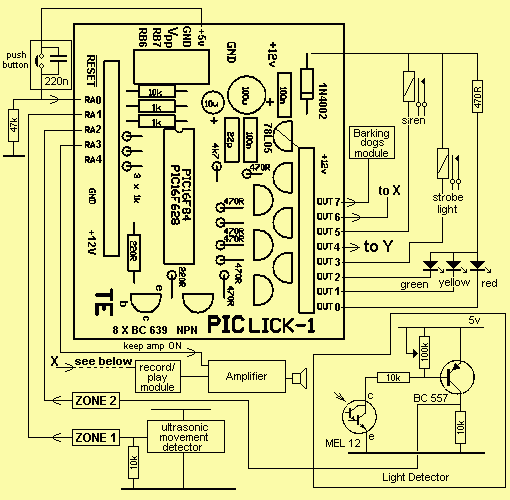
The many DC to DC converters using IC-555
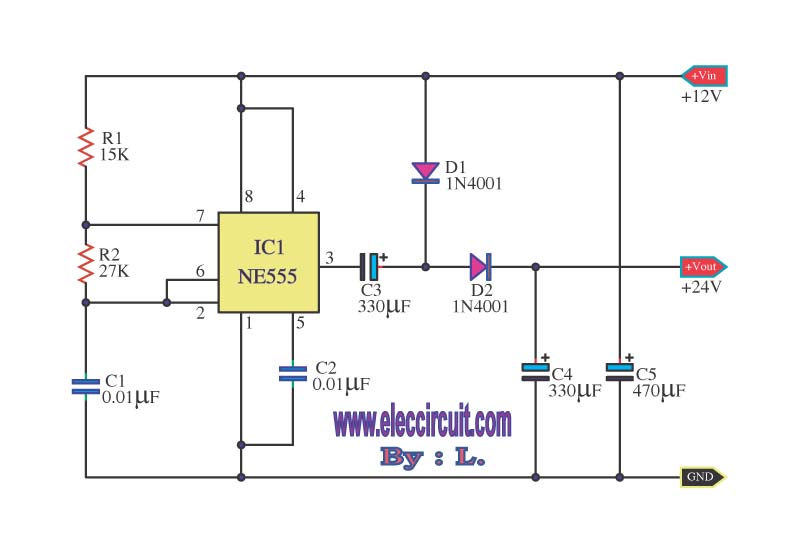
This is a simple voltage doubler circuit that converts 12V DC into 24V DC. It utilizes the popular NE555 timer IC along with a few additional components. The circuit can provide approximately 50mA of current, making it suitable for low-current applications. The operation principle of the circuit is as follows: when a 12V DC input is applied, the circuit processes the voltage smoothly through filtering. The capacitors C5 are connected to IC1, while resistors R1 and R2, along with capacitors C1, form an astable multivibrator square wave generator that outputs a frequency of about 2 kHz from pin 3 of IC1. Capacitors C3 and C4, along with diodes D1 and D2, create a voltage boost mechanism that doubles the input voltage, resulting in an output of approximately 24V DC. This circuit is classified as a DC to DC converter, capable of adjusting the output voltage levels, for instance, converting 6V DC to 12V DC or 12V DC to 24V DC. The power supply input to IC1-NE555 generates a frequency output of 1 kHz. Transistors Q1 (BC547) and Q2 (BC557) operate in a push-pull configuration. When a positive output signal is present, Q1 and Q2 alternate their operation, causing capacitors C2 and C3 to function as half-wave rectifiers. The circuit can also be tested with a 9V battery, allowing for a desired output of 5V. The NE555 IC generates a square wave output, which results in an approximate voltage of 6V. When a positive pulse is output, C2 charges through D1 to ground, and during a negative pulse, C2 discharges through D1, allowing C3 to charge with a negative voltage of about -6V. A zener diode (ZD1) limits the output current to approximately 12mA. The circuit's operation is primarily determined by IC1, R1, R2, and C1, which establish the characteristics of the astable multivibrator, producing a square wave output at pin 3 of IC1. Capacitors C3 and D1 are connected in a clamp configuration, converting positive pulse signals to negative pulse signals. Diodes D2 and C3 convert negative pulse signals into direct current (DC) electrical signals, generating a negative voltage output. The NE555 IC is configured as a stable multivibrator, producing a rectangular wave frequency of about 100 Hz that is output through pin 3, passing through C3 and C4 before reaching the rectification stage. Both positive and negative DC signals are processed in series. The positive power supply interacts with rectifiers D1 and D2, where positive signals pass through D2 to the output and are filtered by C5 for smoothness. Conversely, negative signals are directed through D1 to ground, with the negative power processed by D3 and D4. When a negative signal is present, it is routed through D3, while positive signals are filtered through D4 to ground.
The circuit operates as a versatile voltage doubler, effectively transforming a lower voltage DC input into a higher voltage output, suitable for various electronic applications. The NE555 timer IC serves as the core component, functioning as an astable multivibrator to generate a square wave signal that drives the voltage doubling mechanism. The arrangement of components allows for efficient voltage conversion, with the rectification and filtering stages ensuring a stable and smooth DC output. The design can be adapted for different input and output voltage requirements, demonstrating flexibility in its application. This circuit is ideal for powering low-current devices where a higher voltage is necessary, offering a reliable solution for electronic projects and applications.This be Simple Doubler Voltage circuit, from voltage 12VDC to be 24VDC. By use Timer IC highly popular the number NE555 and other equipment a little again. It can give current get about 50mA convenient for the circuit, that use low current the small-sized. The principle works of the circuit be, When use Volt input 12VDC give with the circuit will touch Filter current smoothly with increasingly. The capacitors C5 give with IC1, The resistor R1, R2 and, capacitors C1, Which build the circuit model astable multi vibrator Square wave generator, at the frequency about 2KHz come out the way pin 3 of IC1. By have capacitors C3, C4 diode D1 and D2. Which build be boost up voltage x 2, which will enhance the level Volt out be the direct current about 24VDC or 2 times of the level Volt input.
This circuit is called DC TO DC converter circuit. Which increase the voltage circuit. There can be customized to change the output values. For example 6Vdc to 12Vdc, 12Vdc input to 24Vdc output. When the power supply input to IC1-NE555 is the output pin 3 at a frequency of 1 kHz. The frequency is Q1-BC547 and Q2-BC557, which will continue to use push pool work interchangeably. If this is the positive output signal Q1 Q2 will run the delete function this reason, C2 and C3 capacitors are half-wave alternating. To test the circuit or circuits that may need some circuits, but we have no fire-5V power supply-5V, but if the battery 9V circuit can allow us to use the volt-5V as desired.
By using IC NE555, which causes wave square the sector output allows the voltage about 6V when the signal on the output from a pulse plus C2 acts charge through D1 to ground and if the pulse negative capacitor C2 will discharge. through diode D1 and capacitor C3 to chage that negative voltage is about-6V, but being removed to the number of left-5V zener diode ZD1 current output will be approximately 12mA.
Work of the circuit is IC1, R1, R2 and C1. The range of the A Stable Multi Vibrator, and the output is a square wave. It is a positive signal pulse frequency of 2. 3 kHz output pin 3 of IC1. And C3 and D1 connected to circuit CLAMP. That it serves to signal a positive pulse to pulse signal negative. The D2 and C3 act negative pulse signal is converted direct current (DCV) electrical signals. The negative power. Thus the output voltage to a negative DC electrical. This circuit is used IC number NE555 set up to stable multi vibrator. It produces a frequency rectangular patch of about 100 Hz. Out to pin 3 through C3 and C4. Before the rectifier power section. Both positive and negative DC 2 series. Positive power supply will work with the rectifier D1 and D2. When a positive signal to be via D2 to the output. And filtered from C5 to filter the pressure to smooth again. But if there is negative signal to the D1 and down through the ground. The negative power of the D3 and D4 the rectifier. When a negative signal to the output signal to be via D3. And will be filtered from C6 to smooth again. When a positive signal to be via a D4 to ground. 🔗 External reference
The circuit operates as a versatile voltage doubler, effectively transforming a lower voltage DC input into a higher voltage output, suitable for various electronic applications. The NE555 timer IC serves as the core component, functioning as an astable multivibrator to generate a square wave signal that drives the voltage doubling mechanism. The arrangement of components allows for efficient voltage conversion, with the rectification and filtering stages ensuring a stable and smooth DC output. The design can be adapted for different input and output voltage requirements, demonstrating flexibility in its application. This circuit is ideal for powering low-current devices where a higher voltage is necessary, offering a reliable solution for electronic projects and applications.This be Simple Doubler Voltage circuit, from voltage 12VDC to be 24VDC. By use Timer IC highly popular the number NE555 and other equipment a little again. It can give current get about 50mA convenient for the circuit, that use low current the small-sized. The principle works of the circuit be, When use Volt input 12VDC give with the circuit will touch Filter current smoothly with increasingly. The capacitors C5 give with IC1, The resistor R1, R2 and, capacitors C1, Which build the circuit model astable multi vibrator Square wave generator, at the frequency about 2KHz come out the way pin 3 of IC1. By have capacitors C3, C4 diode D1 and D2. Which build be boost up voltage x 2, which will enhance the level Volt out be the direct current about 24VDC or 2 times of the level Volt input.
This circuit is called DC TO DC converter circuit. Which increase the voltage circuit. There can be customized to change the output values. For example 6Vdc to 12Vdc, 12Vdc input to 24Vdc output. When the power supply input to IC1-NE555 is the output pin 3 at a frequency of 1 kHz. The frequency is Q1-BC547 and Q2-BC557, which will continue to use push pool work interchangeably. If this is the positive output signal Q1 Q2 will run the delete function this reason, C2 and C3 capacitors are half-wave alternating. To test the circuit or circuits that may need some circuits, but we have no fire-5V power supply-5V, but if the battery 9V circuit can allow us to use the volt-5V as desired.
By using IC NE555, which causes wave square the sector output allows the voltage about 6V when the signal on the output from a pulse plus C2 acts charge through D1 to ground and if the pulse negative capacitor C2 will discharge. through diode D1 and capacitor C3 to chage that negative voltage is about-6V, but being removed to the number of left-5V zener diode ZD1 current output will be approximately 12mA.
Work of the circuit is IC1, R1, R2 and C1. The range of the A Stable Multi Vibrator, and the output is a square wave. It is a positive signal pulse frequency of 2. 3 kHz output pin 3 of IC1. And C3 and D1 connected to circuit CLAMP. That it serves to signal a positive pulse to pulse signal negative. The D2 and C3 act negative pulse signal is converted direct current (DCV) electrical signals. The negative power. Thus the output voltage to a negative DC electrical. This circuit is used IC number NE555 set up to stable multi vibrator. It produces a frequency rectangular patch of about 100 Hz. Out to pin 3 through C3 and C4. Before the rectifier power section. Both positive and negative DC 2 series. Positive power supply will work with the rectifier D1 and D2. When a positive signal to be via D2 to the output. And filtered from C5 to filter the pressure to smooth again. But if there is negative signal to the D1 and down through the ground. The negative power of the D3 and D4 the rectifier. When a negative signal to the output signal to be via D3. And will be filtered from C6 to smooth again. When a positive signal to be via a D4 to ground. 🔗 External reference
